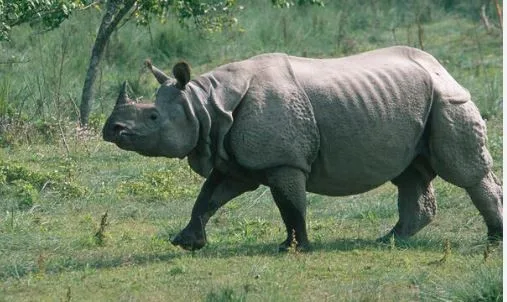NPS Vatsalya Scheme
Syllabus: GS3/Financial Inclusion
Context
- The Finance Minister has launched the NPS Vatsalya scheme.
About
- Introduced in the Union Budget 2024-25, NPS Vatsalya is a new initiative under the National Pension System designed for long-term investments by parents and guardians on behalf of their minor children.
- It is a centrally sponsored scheme launched by the Ministry of Women and Child Development.
- The Pension Fund Regulatory and Development Authority (PFRDA) manages the scheme.
- Key attributes of the Vatsalya NPS account:
- Eligibility criteria: Any minor, having PAN card and Aadhar card, who is under the age of 18 is eligible.
- Minimum contribution: A minimum of Rs 1,000 per year can be contributed with no limit on maximum contribution.
- Contributors to the scheme: Parents/guardians can contribute on behalf of their children.
- Transition after the age of 18: The minor’s NPS account will transition to a standard NPS account, post the submission of required KYC documents.
- Partial withdrawals allowed after 3 years for education, health, and disability up to 25% of corpus
Source: ET
National Centre of Excellence for AVGC-XR
Syllabus: GS3/Infrastructure
Context
- The Union Cabinet cleared the proposal of establishing the National Centre of Excellence (NCoE) for Animation, Visual Effects, Gaming, Comics and Extended Reality (AVGC-XR) in Mumbai.
About
- The Federation of Indian Chambers of Commerce & Industry and the Confederation of Indian Industry will be partners with the Government for this project.
- Tentatively named the Indian Institute for Immersive Creators (IIIC), this hub is set to transform the AVGC sector and drive innovation in immersive technologies.
- The IIIC is designed to be a premier institution offering state-of-the-art infrastructure and technology.
- The centre will provide specialised training in immersive technologies, including Virtual Reality (VR), Augmented Reality (AR), Mixed Reality (MR), and 3D modelling and animation.
- Significance: The centre aims to generate around 5 lakh jobs.
- By offering world-class infrastructure and specialised skills, the NCoE will build a strong talent pool and create significant opportunities for employment and innovation.
Source: IE
Pradhan Mantri Annadata Aay SanraksHan Abhiyan (PM-AASHA)
Syllabus: GS3/ Agriculture
Context
- The Union Cabinet has approved the continuation of schemes of Pradhan Mantri Annadata Aay SanraksHan Abhiyan (PM-AASHA).
About
- The total financial outgo will be Rs. 35,000 crore during 15th Finance Commission Cycle up to 2025-26.
- The Government has converged the Price Support Scheme (PSS) & Price Stabilization Fund (PSF) schemes in PM AASHA to serve the farmers and consumers more efficiently.
- PM-AASHA will now have the components of Price Support scheme (PSS) ,Price Stabilization Fund (PSF) , Price Deficiency Payment Scheme (PDPS) and Market Intervention Scheme (MIS).
- The extension of Price Stabilization Fund (PSF) scheme will help in protecting consumers from extreme volatility in prices of agri-horticultural commodities by maintaining strategic buffer stock of pulses and onion for calibrated release; to discourage hoarding, unscrupulous speculation; and for supplies to consumers at affordable prices.
| PM-AASHA Scheme – The scheme is an umbrella scheme to ensure Minimum Support Price (MSP) to farmers. – It comprises the erstwhile Price Support Scheme (PSS) with certain modifications and rolling out of new schemes of Price Deficiency Payment Scheme (PDPS) and pilot of Private Procurement and Stockist Scheme (PPSS). – Under PM-AASHA, States/UTs are offered to choose either PSS and PDPS in a given procurement season with respect to particular oilseeds crop for the entire State. – Further, states have the option to roll out PPSS on pilot basis in district/selected APMCs of district involving the participation of private stockists for oilseeds. |
Source: PIB
Greater one-horned Rhino
Syllabus: GS3/ Species In News
In News
- The International Rhino Foundation (IRF) published its ‘State of the Rhino’ report, highlighting positive developments for the Greater One-Horned Rhino.
About
- The population has increased by 20% over the past decade, now exceeding 4,000 rhinos.
- Conservation efforts have led to better management of rhino habitats and the creation of wildlife corridors, ensuring safer movement and protection for the species.
- This growth reflects successful conservation programs and habitat restoration efforts across rhino habitats, particularly in India and Nepal.
Greater one-horned rhino
- Habitat: The grasslands and wetlands located in the foothills of the Himalayas and the Brahmaputra and Ganges valley.
- The Great one horned rhino is commonly found in India, Nepal, and Bhutan.
- In India they are found in Kaziranga National Park and Manas National Park in Assam, Pobitora reserve forest in Assam (having the highest Indian rhino density in the world), Orang National park of Assam, Laokhowa reserve forest of Assam and Royal Chitwan National Park in Nepal.
- Protection Status:
- IUCN Status: Vulnerable
- Schedule I of WildLife Protection Act
- CITES Appendix I

Previous article
Developments in Spintronics